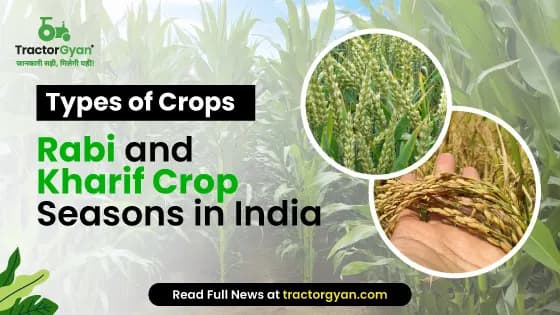What Are Millets? From Benefits to Different Types of Millets Know Everything
टेबल ऑफ कंटेंट
What Are Millets
Millets are cereal grains of different types that belong to the Grass family ( scientific name - is Poaceae family). They can also be used in Birdseed. These millets are mainly used in developing countries such as Asia and Africa. Moreover, it has various health benefits and also includes high nutritional content. Millets are considered highly nutritious as they contain fiber, vitamins, minerals, antioxidants, and much more.
In addition to these, millets are also a rich source of protein. Hence, we can use it as a substitute for our daily grains as well. Millets are highly popular due to their gluten-free content properties and anti-oxidative nature. Different millets have different benefits and nutritional content. Therefore, to learn the health benefits of millets, we will first dive into the types of millets in india.
In addition, we will also cover the nutritional benefits of millet, government measures to increase millet production in india as well as how farmers can benefit from millet production.
So, let's dive into more details!
List of Different Types of Millets in India
-
Finger Millet (Ragi)
-
Foxtail Millet (Kakum/Kangni)
-
Sorghum Millet (Jowar)
-
Pearl Millet (Bajra)
-
Buckwheat Millet (Kuttu)
-
Amaranth Millet (Rajgira/Ramdana/Chola)
-
Little Millet (Moraiyo/Shavan/Sama)
-
Kodo Millet
-
Browntop Millet (Korle)
-
Barnyard Millet (Sanwa)
-
Proso Millet (Chena / Barri)
Let's Understand Types Of Millets in India in Detail
1. Finger Millet (Ragi)

Finger Millet is commonly known as Ragi. Ragi is highly nutritious and can be consumed instead of rice and wheat. It is mainly consumed by fitness freaks. Moreover, Ragi is a gluten-free variant of the Millet family. It is a high source of proteins and amino acids. Additionally, finger millet fosters brain growth in growing children. Furthermore, you can count on millet for your calcium needs as it has high calcium along with iron and other minerals. Hence, Ragi is a super grain with antioxidant properties that foster good health.
2. Foxtail Millet (Kakum/Kangni)

Foxtail Millet is popularly known as Kakum/Kangni in many regions of India. You can find this millet in Semolina or rice flour. Foxtail millet offers a good amount of carbohydrates. Thus, helping your body control blood sugar levels. Moreover, These millets are rich in iron and boost your immunity to a great extent.
3. Sorghum Millet (Jowar)

Sorghum millet or you can say Jowar, is the most common type of millet usually found in every household. This is mainly used to make rotis or bread. Moreover, Jowar is highly nutritious and offers a good source of iron, protein, and fiber. In addition, it has policosanols, which can help you reduce your cholesterol levels. It is a great substitute for wheat and wheat intolerant people can consume jowar. Jowar has more antioxidants than blueberries and pomegranates. Also, it is rich in calories and macronutrients. Hence, Jowar can help you increase your metabolism.
4. Pearl Millet (Bajra)

Pearl millet is also known as Bajra. It is one of the highest consumed millet in india. This can be made in various ways such as roti, khichdi, etc. Bajra pearl millet provides immense benefits and conquers Type II diabetes, cancer, etc. Pearl millet is a rich source of iron, fibre, protein, and minerals such as magnesium and calcium.
5. Buckwheat Millet (Kuttu)

Buckwheat or Kuttu is highly popular as a fasting millet, which is made during the Navratra fasting time. Kuttu can help you fight diabetes and also reduce blood pressure. It can also strengthen your cardiovascular system. It is also loved for its weight qualities, as it can help you lose weight. Buckwheat also possesses anti-cancer properties that fight against cancer of the breast, asthma in children, and gallstones.
6. Amaranth Millet (Rajgira/Ramdana/Chola)

Amaranth Oats commonly known as Rajgira, are a rich source of protein and dietary fiber. It benefits you by fighting against greying and hair loss. Rajgira also lowers cholesterol and cardiovascular disease. It is high in Calcium, vitamins, and other minerals.
7. Little Millet (Moraiyo/Shavan/Sama)

Little Millet is also called Moraiyo, Kutki, Shavan, and Sama. It has nutritional content like vitamin B and essential minerals such as Calcium, Iron, Zinc, and Potassium, etc. Moraiyo is mainly consumed in Southern states of India in many traditional dishes. Little millets is also a good alternative to rice and balance your weight as well.
8. Kodo Millet

Kodo Millet promotes good digestion, as it contains higher amounts of lecithin amino acid. It benefits in strengthening the nervous system. Moreover, Kodo is a good source of B vitamins, especially niacin, B6, and folic acid, among other vitamins and minerals. In addition, it also has calcium, iron, potassium, magnesium, and zinc minerals. Besides these, it is a gluten-free millet and the best alternative for gluten-intolerant individuals. Kodo can also relieve cardiovascular diseases like high blood pressure and high cholesterols when eaten regularly by postmenopausal women.
9. Browntop Millet (Korle)

Browntop Millet is a less-known millet but is gaining popularity today due to its exceptional benefits and nutritional value in India. Moreover, it is favorable to grow in dry and hot conditions. This makes it feasible for all the farmers to grow it in any area with high yield potential and high market price. Brown top millet is packed with many health benefits for health as it controls diabetes. High blood pressure. Fights against heart diseases and cancer.
10. Barnyard Millet (Sanwa)

Barnyard millet, which is also known as Sanwa in Hindi is known for its fastest-growing nature that only takes 45 days to grow. It is used in making different types of porridges. Moreover, this millet is more popular as it can be also used during fasting days in India. Barnyard can help you lose calories. It is a good source of fiber and has a low glycemic index, which means carbohydrate content is also low. Moreover, it offers high iron as well as a gluten-free nature benefits gluten intolerance.
11. Proso Millet (Chena / Barri)

Proso millet is popularly known as a miracle grain, as it contains high protein compared to other bullets. It is grown in temperate climates around the world. Proso millet is used mainly for soups, salads, breads, etc. It is also known to treat wounds and rashes. It is also a gluten-free grain and can be used as a substitute for rice and wheat with more health benefits. It is also a fast-growing and drought-intolerant crop, which allows the farmers to grow with less production cost.
Benefits of Millets
-
Good Digestion - Millets are rich in fiber thus boosting digestion and preventing diarrhea and other gastrointestinal diseases. In addition, it also prevents peptic ulcers and colon cancer.
-
Prevents asthma - Unlike wheat, Millets can prevent asthma and is a super food for asthma patients.
-
Controls Cholesterol - Fiber content in millets helps you from clogging the arteries. It performs a cleansing operation by removing bad LDL cholesterol from the body. Thus, protecting the body from many diseases.
-
Removes Toxins - millets can help you flush out bad toxins from the bloodstream as it contain anti-oxidative properties. It contains catechins such as Quercetin that detoxify the body. It also helps the kidneys and liver function properly by removing toxins from the body.
-
Diabetes friendly - Millets are good for diabetic patients as they possess a high amount of magnesium that produces insulin efficiently. And thus, preventing diabetes. Hence, Millet controls your sugar levels.
-
Prevent growth of Free radicals - Millet prevents the growth of free radicals that cause oxidative damage, causing diseases such as cancer. It has antioxidant content like quercetin, selenium, and pantothenic acid that prevents the body from producing cancerous cells.
-
Heart - Millet is a rich source of fiber, magnesium, and potassium, which maintains cholesterol levels and regulates a healthy blood flow in the body.
-
Prevent Anemia - Millet is a superfood for anemia. It has folic acid, folate, copper, and iron content that increases the formation of red blood cells. It manages the hemoglobin to an adequate level.
Nutritional Benefits of Millets
Various Millets types are among the best superfoods that are essential for better health. It is loaded with immense nutrients and offers many benefits to our body. Generally, its nutritional content includes 14.00 mg of Calcium, 0.535 mg of copper, 3.94mg of iron, and 119 mg of magnesium. Etc. In addition, It also contains 1.002 mg of manganese, 32.7mcg selenium, and 224.00mg of potassium, and 285.00 mg of phosphorus. Moreover, it is loaded with many vitamins such as niacin, riboflavin, Pantothenic acid, Folate, Folic acid, Vitamin B6, Vitamin C, Vitamin E, and K.
Government Measures To Increase Millet Production
Millets have emerged as the popular grain among farmers due to their ability to grow with less rainfall and inhospitable soil. Moreover, the government has also initiated certain measures to increase the production of millet in india. These measures are as follows:
1. Integrated Cereals Development Programmes
An integrated cereals development program was initiated by the central government to improve the agricultural production of india. This program is named “Revised Macro Management of Agriculture” under the Department of Agriculture and Cooperation. Moreover, the central government also gives freedom to states to grant money for schemes according to their development priorities.
2. INSIMP
Another scheme focuses on promoting “Nutri-cereals” as part of the government’s Initiative for Nutritional Security through Intensive Millet Promotion (INSIMP) in 2011. This plan focuses on encouraging farmers to grow and increase the nation’s millet production. Under the INSIMP scheme, farmers receive pesticides, urea, and seed kits, including hybrid seeds.
3. Rainfed Area Development Programme
The Government has also initiated a “Rainfed Area Development Program (RADP)”. This program is a sub-scheme of the Rashtriya Krishi Vikas Yojana (RKVY) that was introduced by the Department of Agriculture Cooperation and Farmers Welfare in the year 2011-12. This program benefits small and marginal farmers, by availing them of a required package of activities to increase farm productivity.
4. APEDA Action Plan
An APEDA strategy is developed to promote millets and increase the production of millets in india. This plan is accompanied by the support of the Indian Institute of Millet Research (IIMR), as well as other stakeholders like the National Institute of Nutrition (NIN), CFTRI, and Farmer Producer Organisations (FPOs). Furthermore, this plan focuses on Millet cluster identification and the development of a platform to bring farmers together and other stakeholders. In addition, it also includes the discovery of new prospective international markets for the promotion of Indian millets.
How Farmer Can Benefit From Millet Production?
Farmers can have various benefits through cultivating different types of millet. Some of the benefits are mentioned below:
-
Millet cultivation requires less water and fertilizer than other crops. Thus, helps farmers with low production costs.
-
Some millets also require less time to grow and thus, farmers can grow multiple crops in a year. Thus, increasing income potential.
-
Millets can also be processed in flour, flakes, etc, thus, allowing farmers to develop more valued products and better prices in the market.
-
Millets can also be grown in less rainfall areas, thus allowing farmers of every region to get the potential benefit of growing them in drought conditions.
-
It is also known to improve soil fertility by its ability to fix nitrogen in soil and prevent soil erosion. Thus, helping farmers with better yields.
-
Millets can also foster food security in india as it has various nutritional benefits that prevent malnutrition.
Conclusion
So, the above information signifies that Different types of millet are the most popular grain with immense benefits and nutritional value. Moreover, favorable to grow under drought conditions requiring less water and fertilizers. Thus, reducing the cost of production for marginal farmers. In addition to that, government also encourages farmers to grow millet with various government schemes. Hence, the rising popularity of millets can benefit farmers with high market value, thus securing their livelihoods with stable income. Therefore, millet are superfoods that come in various varieties, and every variety with immense health benefits.
I hope this article has provided you with enough information on millets. For more related information to farming, and cropping, stay connected with TractorGyan blogs and articles.
कैटेगरी
और ब्लॉग पढ़ें
भारत के प्रमुख ट्रैक्टर निर्माता ब्रांड, सोनालीका, ने अपने जनवरी 2024 ट्रैक्टर बिक्री की घोषणा की है। सोनालीका ट्रैक्टर सेल्स जनवरी 2024 में 9,769 यूनिट्स रही।
यह कंपनी की कुल बिक्री है, जिसमें घरेलू और निर्यात बाजार शामिल हैं और इसके साथ ही,...
Bengaluru, 2 February’ 2024: VST Tillers Tractors Limited (VST), India’s leading farm equipment manufacturer, announced their Quarter 3 and Nine-month results for the financial year 2023-24.
For Nine months, VST has achieved a turnover of Rs 694.61 Crore compared to Rs 683.82 Crore...
As a company that keeps talent development as priority, Mahindra Group has undergone some major changes in its executive leadership team.
Mr. Amarjyoti Barua
Mr. Amarjyoti Barua takes over the position of the Group Chief Financial Officer and Key Managerial Personnel of the Company...
इसके बारे में अपनी टिप्पणी लिखें What Are Millets? From Benefits to Different Types of Millets Know Everything
.webp&w=1920&q=75)
ट्रैक्टर और कृषि से जुड़े सबसे अधिक खोजे जाने वाले ब्लॉग्स
18 Dec 2025
18 Dec 2025
29 Jul 2025
08 Sep 2025
03 Jul 2025
30 Jul 2025
30 Jul 2025
30 Jul 2025
29 Jul 2025
30 Jul 2025
29 Sep 2025
31 Jul 2025
18 Dec 2025
31 Jul 2025















.webp&w=2048&q=75)










.webp&w=2048&q=75)
.webp&w=2048&q=75)



























